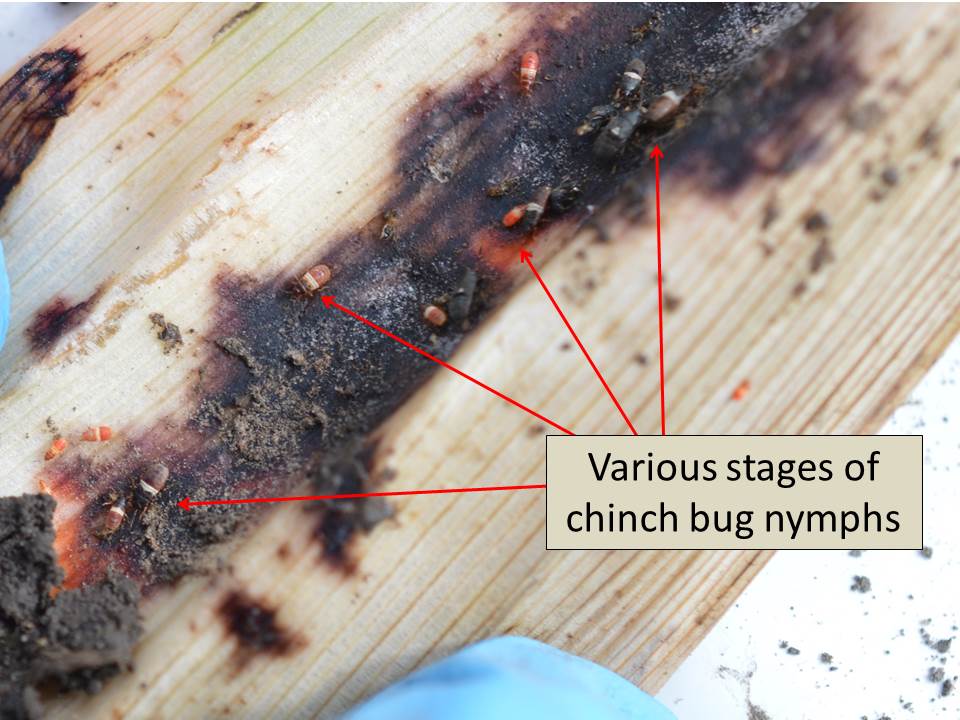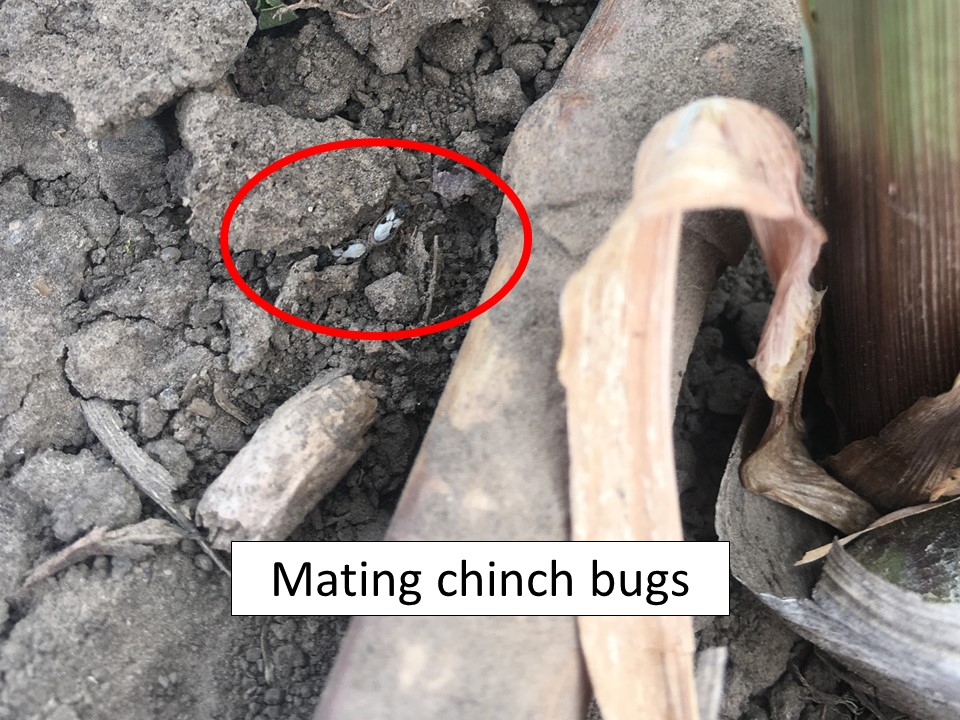— by Dr. Jeff Whitworth and Dr. Holly Davis
All life stages of chinch bugs seem to be extremely active at the present time in both corn and sorghum. Nymphs and adults started migrating out of wheat fields at least two weeks ago, moving into any adjacent corn or sorghum fields. Those smaller reddish nymphs have grown considerably since then, and are now either late instar nymphs or adults.
Many of these recently matured adults are now mating and have even started egg deposition. These eggs are, and will continue to be, hatching which means more bugs and thus more feeding on these plants. Fortunately, most corn is large enough to withstand considerable feeding by chinch bugs. Plus, the recent rains greatly enhanced growing conditions, which increases the plant’s tolerance for chinch bug feeding. However, most sorghum is much less developed and won’t be able to tolerate as many chinch bugs as the larger corn plants. Treating plants much after the V-6/V-7 growth stages is not as effective as treating smaller plants. Like corn, good growing conditions significantly help plants withstand chinch bug feeding. However, if dry, droughty conditions return, chinch bug feeding can significantly weaken stalks and cause lodging later in the season. For more information on chinch bugs, management decisions, and/ or insecticide recommendations, please see:
Chinch Bugs MF3107: https://www.bookstore.ksre.ksu.edu/pubs/mf3107.pdf
2018 Sorghum Insect Management Guide: https://www.bookstore.ksre.ksu.edu/pubs/mf742.pdf

